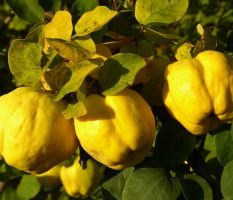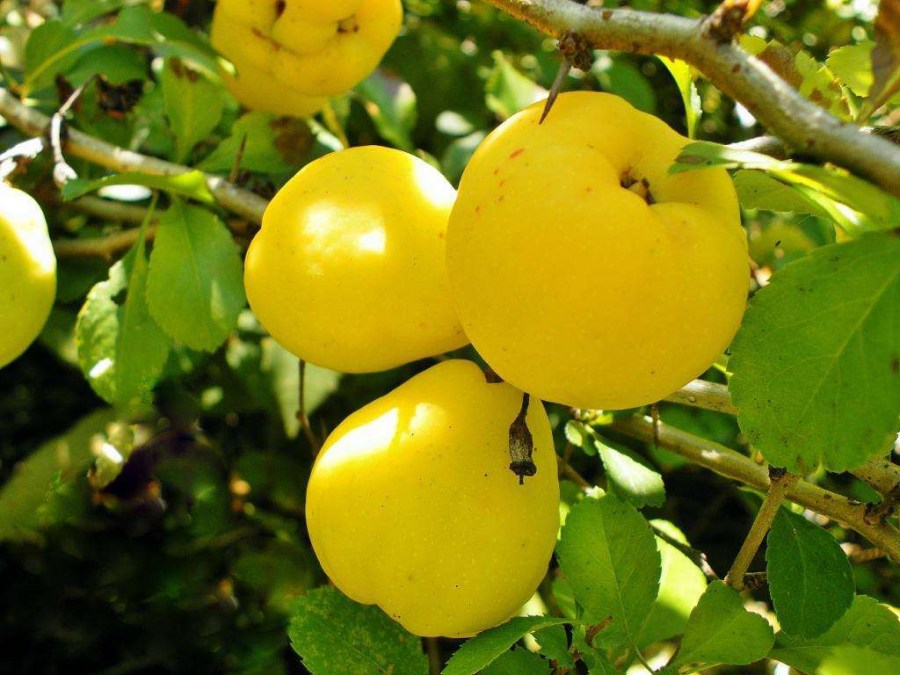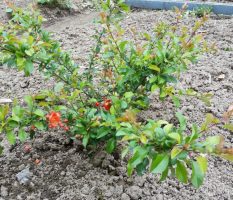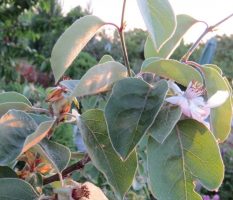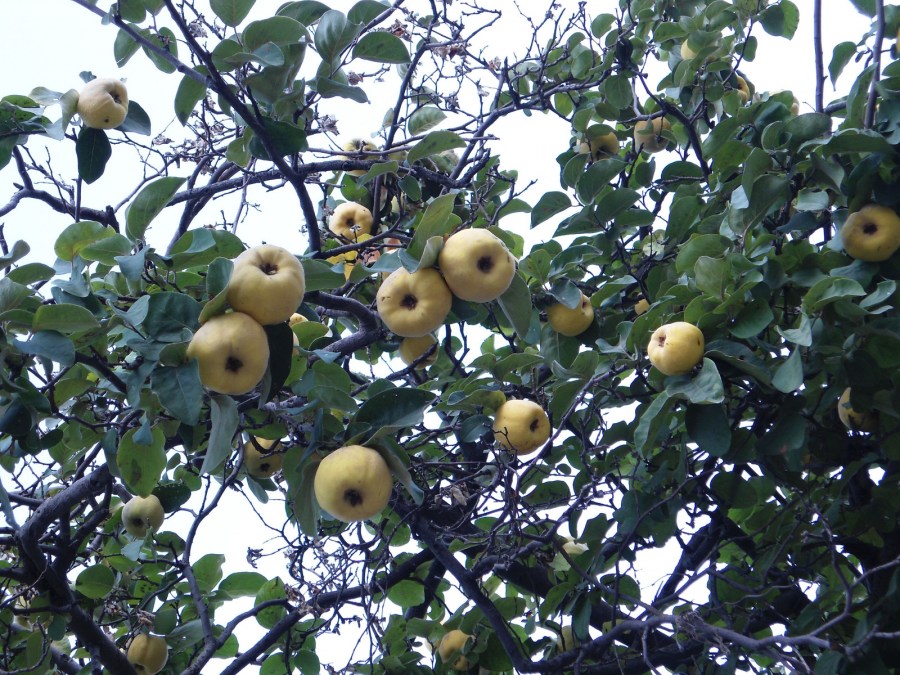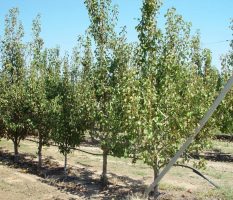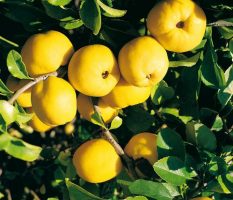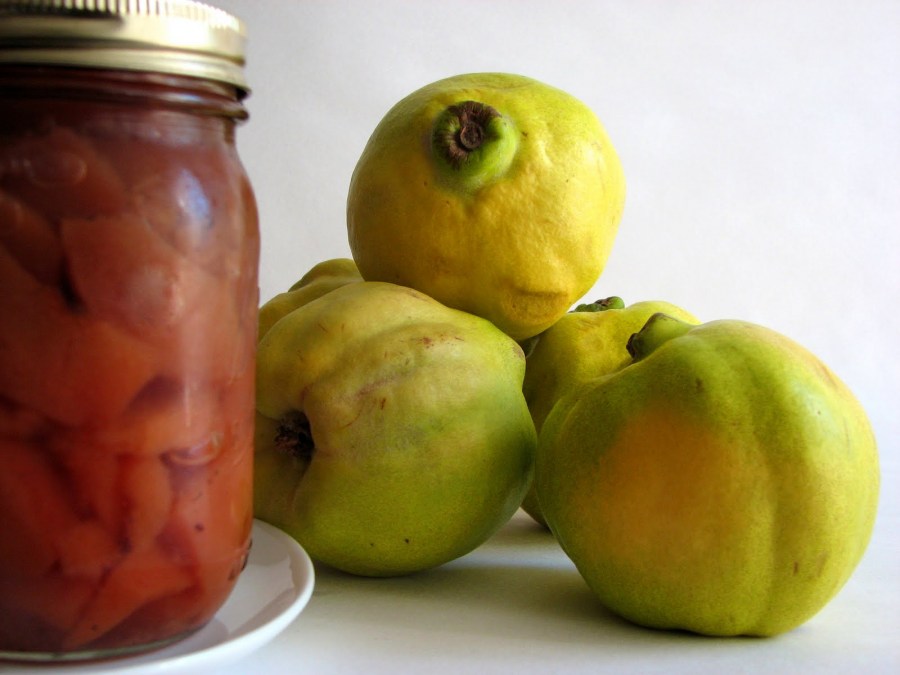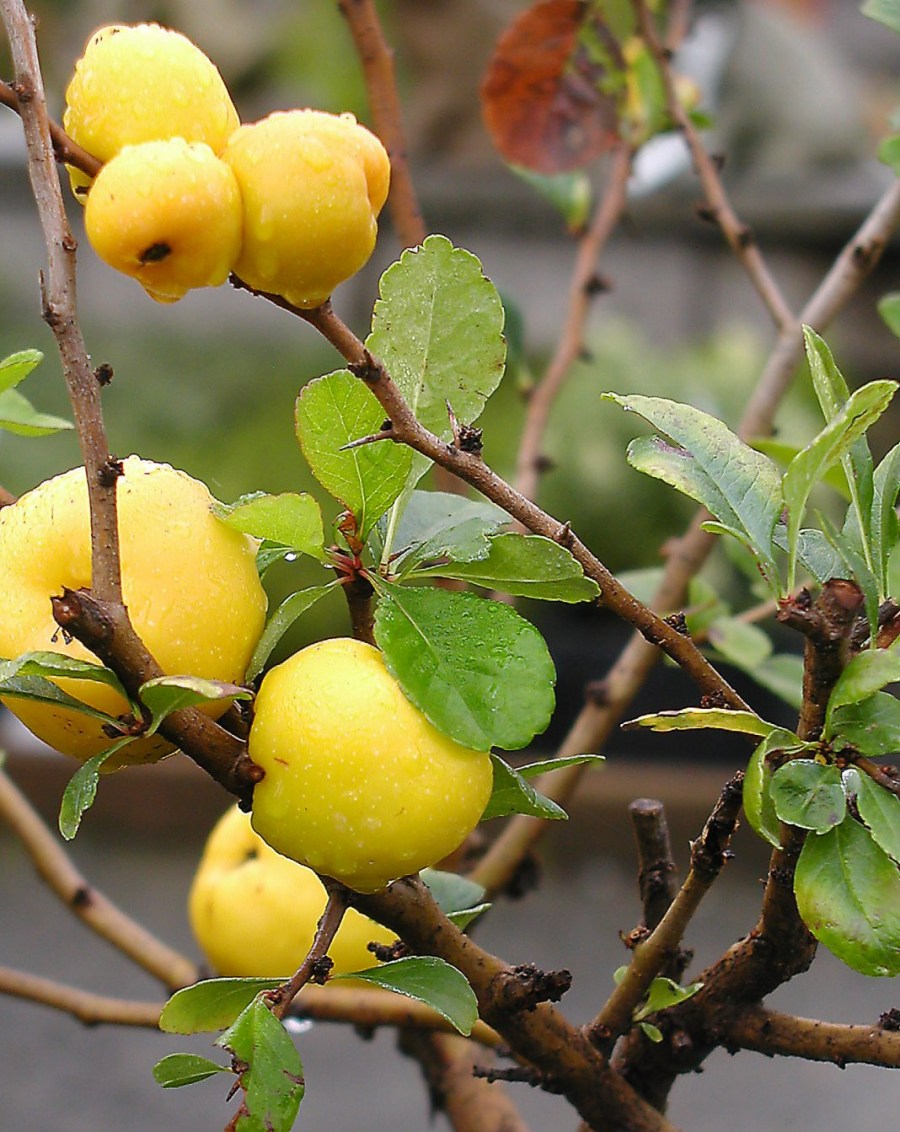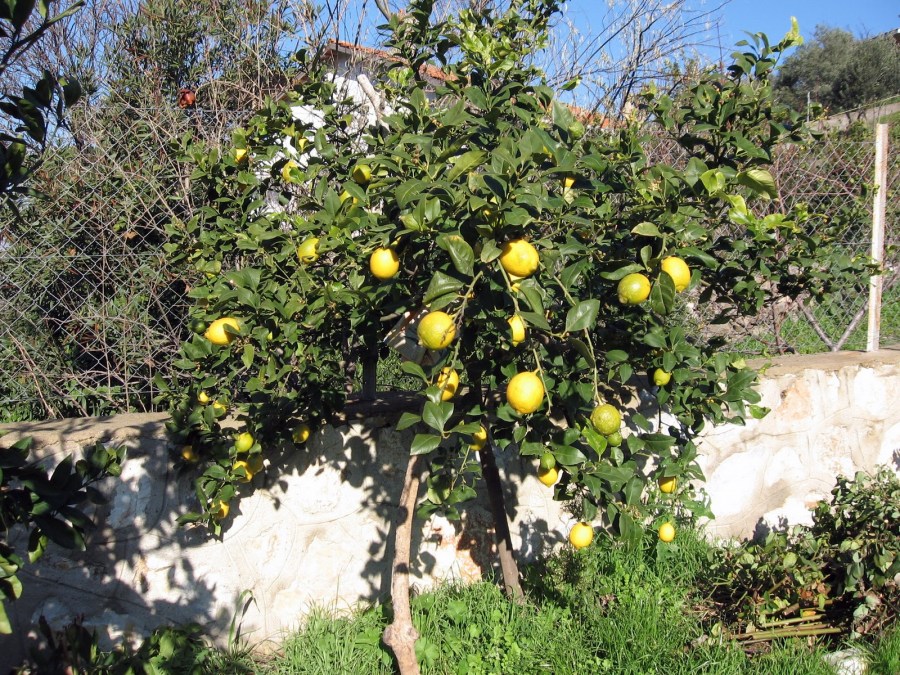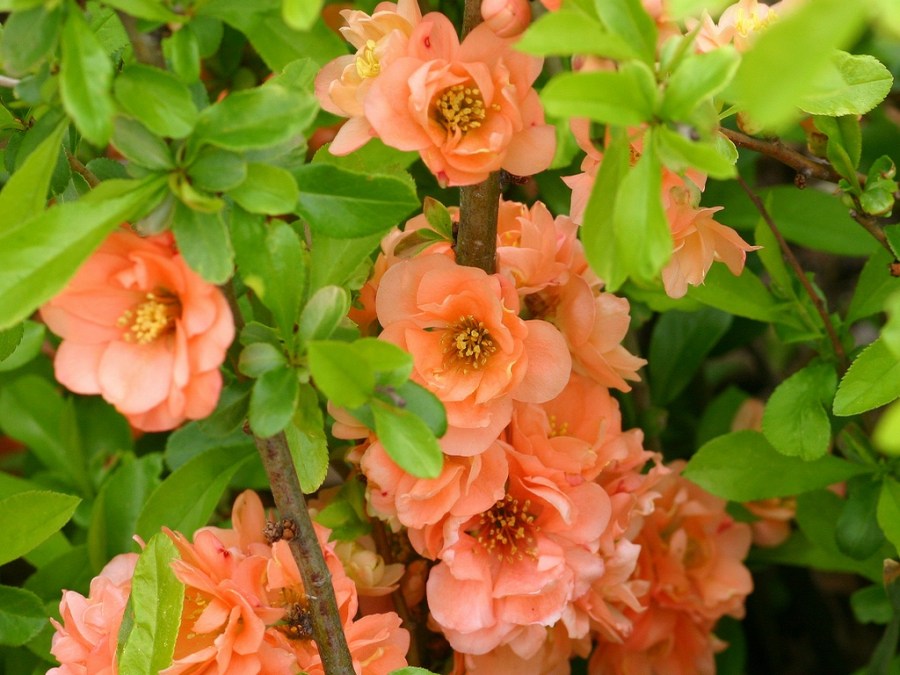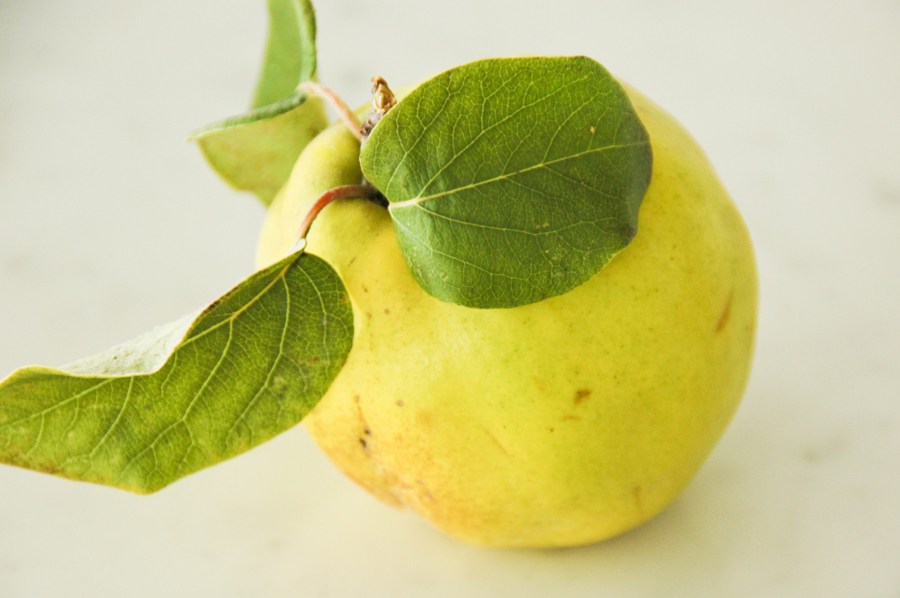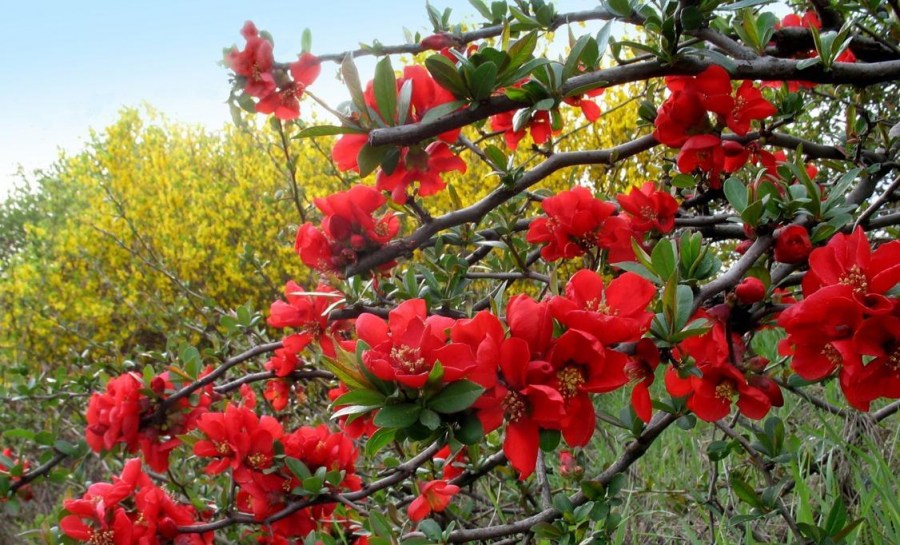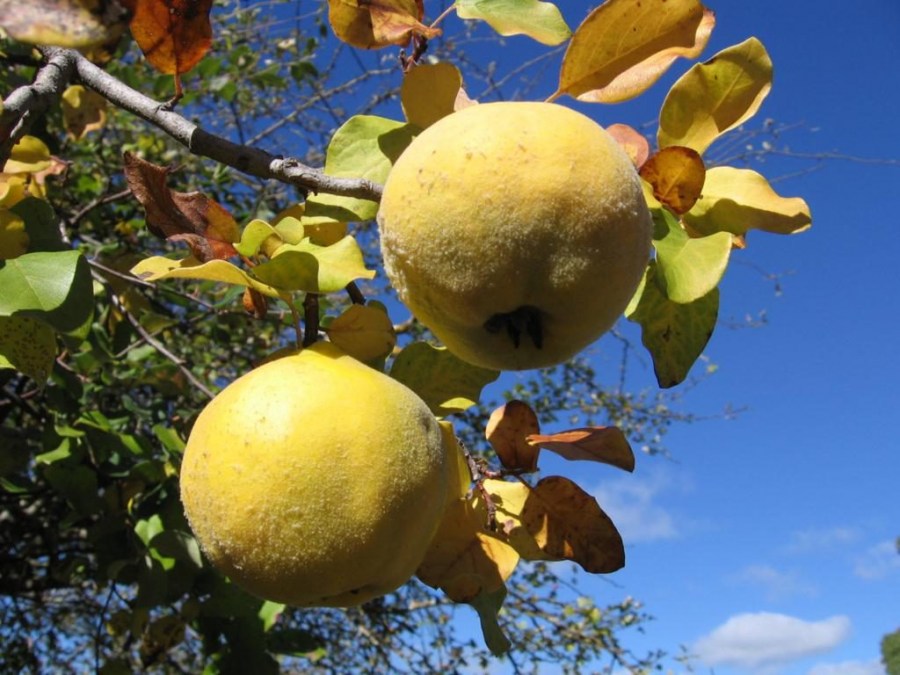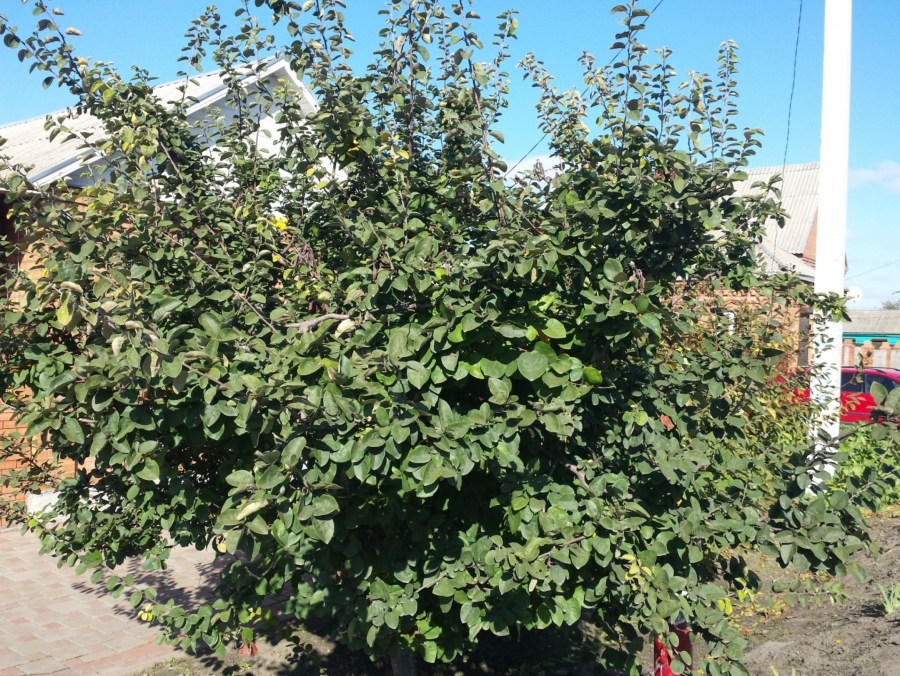Quince - all useful properties. Overview of species, recommendations for care and landing (130 photos)
Despite all the richness of the Russian language, for some reason it did not find two different words to denote two genera of the same family of Rosaceae. And now it is equally called both the ordinary quince (oblong) - the only representative of the Zidonia genus, and the Japanese quince of the Genomeles genus. It turns out a little confusion, which, however, is easy to understand by descriptions and photos of varieties of quince.
Common Quince - Cydonia oblonga
The Latin name for the genus Cydonia comes from the name of the ancient Greek city of Cydon, which was located on the northwest coast of Crete, on the territory of the present port city of Chania.
Trojan war: Eris and quince are to blame for everything?
Ask any more or less educated person, and he will answer you that the reason for the beginning of the Trojan War was the unseemly act of Paris, who had abducted Helen, the wife of Tsar Menelaus.
In fact, the story began much earlier. From the moment when they did not want to invite Eris, the goddess of contention, to one wedding. Enraged and offended, she did not appear to be called, left her little gift on the table and left.
The gods saw a golden fruit with the inscription "The Most Beautiful." Each of the three goddesses - Venus, Minerva, and Juno - of course, believed that the title "most beautiful" should rightfully belong to her. Paris was asked to resolve the dispute (all other guests prudently refused, fearing the wrath of the losing beauties).
Minerva and Juno promised the young man power, courage, military victories, knowledge and wisdom. And Venus is the possession of the most beautiful woman in the world. The prize went to Venus, Paris received Elena as a reward. And the nerd of contention, as the nerds believe, and historians do not contradict them, was not an apple at all, but a quince - the most ordinary, tough and unedible!
Botanical characteristic
A small tree, often in the form of a bush, with a height of one and a half meters to five, rarely up to 8 m. Obliquely growing upward branches do not have thorns, young shoots are pubescent, greenish-olive or brown in color.
Leaves no longer than 10-12 cm, often oval, less often rounded; the upper side of the leaf blade is naked, dark green in color, the lower side is grayish, felt-pubescent. Petiole is pubescent, up to 2 cm long. Single flowers are white or pale pink, with a diameter of up to 5 cm - very effective, with a wonderful smell.
A tree is literally strewn with flowers in late spring - early summer, for 10-13 days, and the sight is unforgettable. It is also no less attractive in the fall, when its main decoration is yellow large “apples” covered with soft felt pubescence (ripened fruits become smooth and hard, with hard and low-fat pulp).
Classification
The view consists of five varieties, of which two are decorative:
- pyramidal (f. pyramidalis) - a characteristic sign of the crown
- marble (f. marmorate) - with yellow and white-motley leaves
And three groups according to the shape of the fruit:
- apple-shaped (f. maliformis)
- pear-shaped (f. pyriformis)
- Portuguese, rib-pear-shaped (f. lusitanica)
In a culture since time immemorial. There are over 400 varieties of garden quince in the world, of which only a tenth is grown in Russia and neighboring countries. Of the traditionally cultivated in the Caucasus and Transcaucasia, for example, Scythians Gold, Muscatnaya, Aurora, Vraniska Denmark, entered into the State Register, popular local ones are Atbashi, Dzhardash, large-fruited Merginsky, Ordubadsky and others.
In the Lower Volga region, the old French variety Anzherskaya is grown, as well as some other varieties: Collective, Krasnoslobodskaya, Teplovskaya, Late and early Maslyanka.
Varieties cultivated in Central Asia are superior to the Caucasus in taste, but inferior in size and weight of the fruit.Quince Michurinskaya became widespread in a temperate climate, and specially for cultivation in the Central region in 1998, Moscow quince Susova was bred - small-fruited, but unusually aromatic.
Among other economically valuable qualities of this variety, high winter hardiness, resistance to diseases and pests, and annual abundant fruiting can be noted.
Landing and care
The plant is of southern origin, so almost all varieties are photophilous and not frost-resistant enough. The place in the garden is selected exclusively sunny, not blown by the winds. Quince is not very demanding on soils, it can tolerate even minor salinization, although it prefers fertile and constantly moist soil. With strong fluctuations in humidity, the fruit may crack.
The highest yield is demonstrated on heavy loamy soil, however, on sandy soil it comes into fruition earlier. On dry soils it forms smaller and drier fruits, on moist soils it is large and juicy, but it has astringent and woody taste.
Plant care consists, perhaps, of only two important measures: watering in a dry summer, especially on sandy loamy soils, and timely and correct pruning. The latter consists in annual sanitary pruning, when broken, diseased and thickening crown branches are cut out; in light anti-aging pruning every 3 years in adult trees, and strong anti-aging - old, weakly fruiting trees.
Varietal quince is propagated vegetatively, in all possible ways (grafting, layering, root shoots, cuttings with green or lignified cuttings).
Seed propagation is used only in two cases: to obtain a stock and to acclimatize quinces in areas with colder climates. In the south, the strong wild quinces are a good stock for the medlar and pear, especially the Angerskaya variety.
Crop processing
Large, beautiful and aromatic raw quince fruits are practically unsuitable for food. Therefore, most of the crop is allowed for processing. In addition to traditional compotes, jam, marmalade, jams and marmalade, quince serves as an excellent raw material for obtaining very useful and tasty juice.
Quince juice becomes tastier in combination with other fruit juices (apple, peach, banana), or mixed with pumpkin. Good both fresh and canned.
But this is not limited to the use of quince fruits in cooking. From it you can prepare spicy sauces for meat dishes and poultry. Stewed or baked quince is added to the casserole, pilaf, porridge.
Finally, the fully ripened fruits of some nutmeg varieties can also be used in raw form - you only need to know when to harvest quince so as not to pick ripened fruits. Raw quince, cut into slices, is added to tea to enrich its taste and aroma: it is even better than tea with lemon!
Japanese Quince (Henomeles Japanese) - Chaenomeles japonica
The name of the genus was due to the earlier erroneous idea that the fruit of the genomeles falls into five parts: in Greek, “chainein” is chopped and “meles” is apple.
Botanical characteristic
Homeland is Japan, widely distributed also in China and Europe. Low shrubs usually up to 3 m, very prickly. The crown is densely leafy, dense.Leaves at a young age of a bronze or red hue, with age become dark green; dense and leathery, 3-5 cm long. Flowers 3-4 cm in diameter, from pink to orange-red, in scutes consisting of 2-6 flowers.
In the middle lane, the flowering period is 3-4 weeks. Begins to bear fruit from 3-4 years of age. The fruit is an apple, bright yellow in the shape of a ball or an egg. The fruits look very impressive against the background of dark green foliage. The bush is equally beautiful both during flowering and fruiting.
Often found in gardens, Japanese quince is low (Maulea genomeles): a sprawling shrub no more than a meter tall, with arched bending, very prickly shoots. This is the most winter-hardy representative of the genus. There are decorative varieties (Diamond, Vesuvius, Hollandia, Nivalis, Nicoline) and several garden forms.
Landing and care
Growing Japanese quince is not difficult. The plant is photophilous, prefers soils rich in organic matter, fertile. It tolerates drought, but in hot, dry summers it needs watering. Growing slowly.
The shrub can be cut - while flowering and fruiting are preserved, so it is good for creating hedges. Able to survive, grow and bloom beautifully in a city.
There are many decorative garden forms. But it’s hard to find them on sale. Therefore, most often in the gardens you can find non-varietal seedlings. Moreover, this species is easily propagated by seeds that are sown before winter or spring, after 3-4 months of stratification in the refrigerator.
It also reproduces well in all other ways: layering, green cuttings, root offspring. The purpose is mainly decorative, although the fruits are edible and can be used for culinary processing.
If this wonderful, beautiful and healthy plant is not growing in your garden yet - it's time to think about planting it!
Quince photo
Thuja western: 80 photos of the best applications for landscaping
Drainage on the site: 115 photos and the procedure for the implementation of the system
Pomegranate tree: planting, care, growing from a stone + plant photo
Join the discussion:




